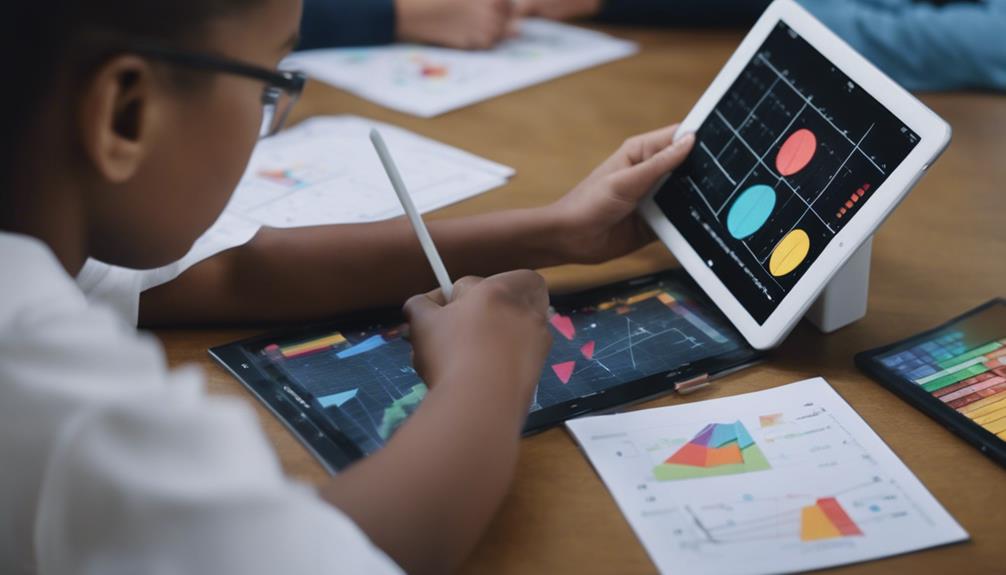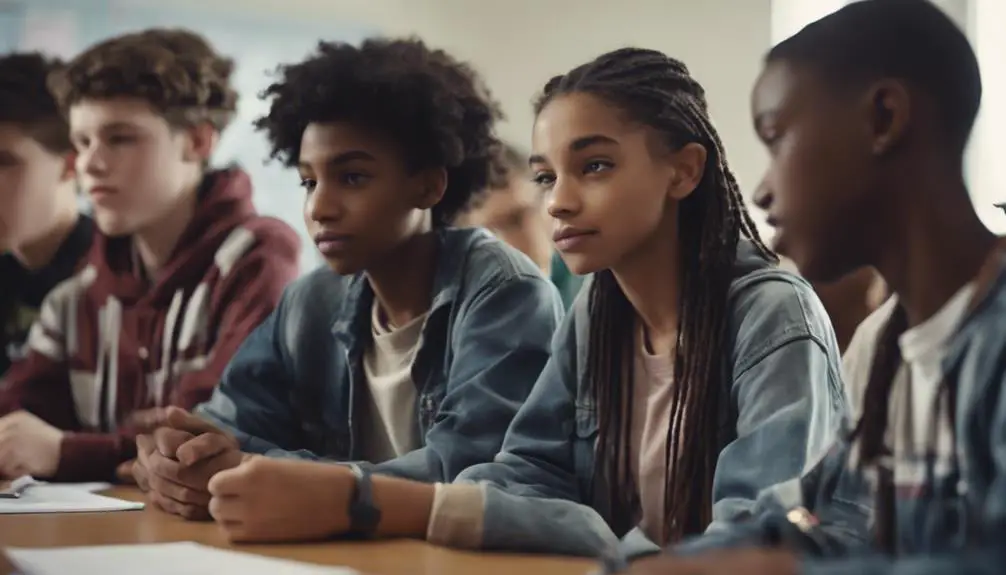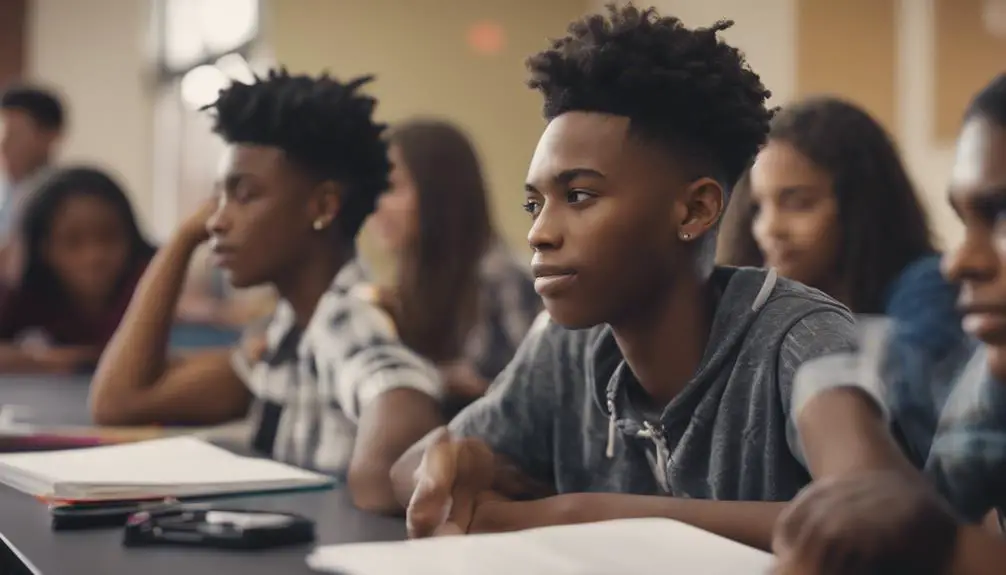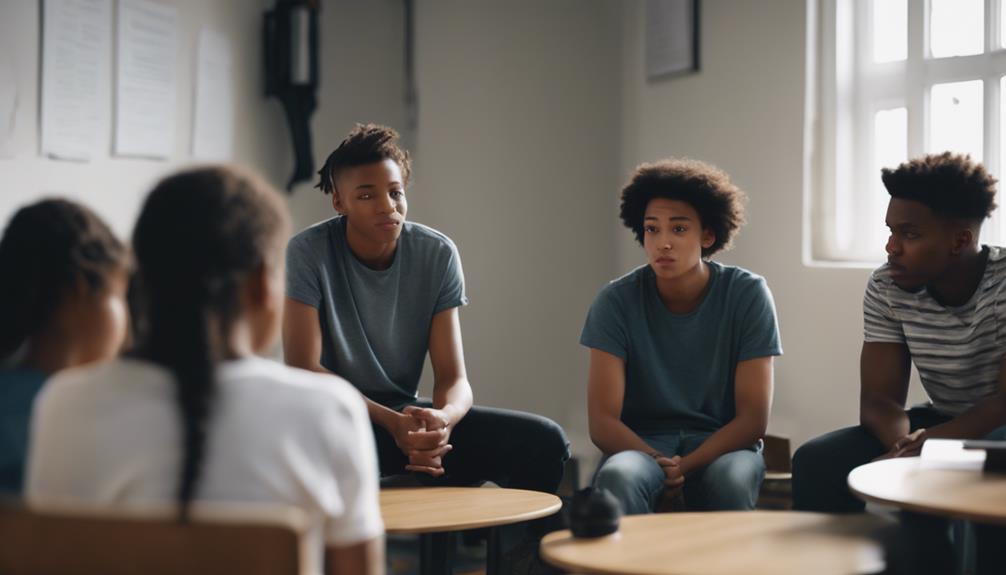When ensuring student success in the classroom, it’s crucial to track their progress. By using different strategies during a lesson, we can understand how well they’re grasping the material and adjust our teaching accordingly.
Methods like pre-assessments, taking observational notes, and encouraging student self-assessment provide valuable insights into student understanding. These techniques help us make informed instructional decisions that can lead to better learning outcomes for all students.
Effective ways to monitor student progress during a lesson

Here are 13 practical and effective ways to keep track of how students are progressing during a lesson.
By using methods like pre-assessments, taking observational notes, using exit tickets, engaging in think-pair-share activities, and having one-on-one check-ins, educators can gain valuable insights into students’ comprehension levels and adjust their teaching accordingly.
These monitoring strategies create a supportive learning environment and enable teachers to address individual needs in real-time.
Pre-assessment
Administer a pre-assessment before starting a new topic to gauge students’ prior knowledge. This will enable you to tailor your instruction to meet their individual needs and address any misconceptions right from the start.
Before starting a new topic, it’s important to assess what students already know. This helps tailor teaching to meet their specific needs and address any misunderstandings right from the beginning. By identifying and correcting misconceptions early on, teachers can provide immediate support and encourage collaboration among students to deepen their understanding.
This process also fosters a stronger teacher-student relationship through personalized feedback. Pre-assessments promote critical thinking by giving insights into students’ current knowledge, allowing educators to adjust their strategies effectively. Taking a proactive approach like this enhances learning outcomes and creates a supportive and engaging classroom environment.
Observational notes
During a lesson, we actively take notes to track each student’s progress, identify where they may be struggling, and provide immediate help. Peer observations are valuable for understanding the class dynamics and boosting student engagement.
By monitoring progress closely and giving feedback in real-time, we personalize our support for each student based on their learning style. Effective communication is essential for addressing difficulties and offering individualized assistance.
Analyzing data from these observations helps us create focused intervention strategies that make a significant impact. This hands-on approach enables us to adapt swiftly to students’ needs, cultivate a supportive learning atmosphere, and promote continuous advancements in student learning.
Exit tickets
Using exit tickets as a quick formative assessment tool at the end of a lesson helps us understand student comprehension. Students summarize key concepts, provide feedback, and answer specific questions. These tickets are valuable for assessing understanding and identifying areas of confusion.
Regularly reviewing exit tickets gives insights into student progress, allowing tailored instruction. Encouraging reflection through exit tickets empowers students and provides feedback for improving teaching practices.
Think-pair-share
Incorporating the think-pair-share strategy into lessons improves student collaboration and helps assess comprehension levels effectively. This method encourages collaborative learning, independent thinking, peer discussion, and whole-class participation.
- Collaborative Learning: Students work together to enhance their understanding.
- Independent Thinking: Students are prompted to think critically before sharing their ideas.
- Peer Discussion: Enables students to exchange thoughts and clarify concepts with their peers.
- Whole Class Participation: Creates a supportive environment for sharing diverse perspectives.
One-on-one check-ins
Following collaborative learning activities, I supplement student comprehension with regular one-on-one check-ins to discuss progress, address doubts, and offer personalized feedback. These sessions help us monitor advancements, boost student engagement, and provide tailored support.
By delivering individualized feedback during these meetings, we cultivate a supportive atmosphere where students feel recognized and supported. These interactions not only assist us in evaluating each student’s understanding but also strengthen the teacher-student relationship.
Through these personalized check-ins, we can cater to specific needs, celebrate accomplishments, and guide students toward a deeper grasp of the material, fostering a positive and meaningful learning journey for all involved.
Quizzes and formative assessments
In my lessons, I incorporate brief quizzes and assessments to check students’ understanding and provide immediate feedback. These assessments promote collaboration among peers and encourage group discussions, creating a dynamic learning environment.
The advantages of including short quizzes and formative assessments are:
- Peer Collaboration: Fostering a sense of community and shared learning through group work.
- Immediate Feedback: Offering insights into student comprehension in real-time for quick adjustments to teaching strategies.
- Group Discussions: Stimulating critical thinking and collaborative learning among students.
- Short Quizzes: Providing rapid assessments to gauge understanding and pinpoint areas for further instruction.
Peer assessment
Let’s involve students in peer assessment activities to encourage active participation and improve critical thinking skills while gaining valuable insights into their comprehension.
Group reflections and peer evaluations promote critical feedback and analytical thinking, fostering student engagement in collaborative learning environments. This process not only provides students with constructive criticism but also helps them develop the ability to give thoughtful responses that contribute to their skill enhancement.
Peer assessment empowers students to actively participate in their learning journey and allows educators to witness firsthand how students engage with and grasp the material. By cultivating a culture of cooperation and mutual support among students, peer assessment nurtures a deeper understanding of the subject matter.
Use of technology
Leverage educational technology tools, such as online quizzes, interactive games, and learning platforms, to monitor student progress. Such tools often provide immediate feedback and detailed analytics, allowing you to identify areas of concern and tailor instruction accordingly.
When educators use educational technology tools like online quizzes, interactive games, and learning platforms, they can get immediate feedback and detailed analytics to track student progress effectively.
Here are some advantages of integrating technology for monitoring student advancement:
- Engaging Gamification: Make learning more enjoyable and effective by incorporating interactive and game-like elements to keep students engaged.
- Instant Quiz Feedback: Quickly assess student understanding and address any misconceptions by receiving immediate feedback on their performance through online quizzes.
- Interactive Learning Experience: Enhance student participation and provide a dynamic learning environment by utilizing interactive learning platforms.
- Real-Time Progress Monitoring: Keep track of student progress in real-time, enabling timely interventions and adjustments to teaching strategies.
Graphic organizers
Creating graphic organizers allows students to visually represent their understanding of a topic, offering valuable insights into their thinking processes and areas for improvement. Through concept mapping or mind mapping exercises, students can structure information systematically, establishing connections between different concepts and ideas. This approach enhances visual representations while fostering the development of critical thinking and analytical skills. Reviewing these graphic organizers provides instructors with a window into students’ cognitive processes, highlighting the depth of their comprehension and pinpointing areas that may need further clarification. Here is a table outlining the advantages of utilizing graphic organizers:
| Benefits of Graphic Organizers |
|---|
| Visual representations |
| Concept mapping |
| Mind mapping |
| Information organization |
| Thought processes |
Student self-assessment
Encourage students to assess their own progress and understanding through self-reflection exercises. This helps students develop metacognitive skills while giving you a valuable perspective on their learning journey.
How can students effectively evaluate their progress and understanding through self-reflection exercises to enhance metacognitive skills and gain insights into their learning journey?
Encouraging self-assessment empowers students to take charge of their learning process. Here are some practical ways to support student self-assessment:
- Peer Discussions: Encourage students to converse with classmates about their progress, gaining fresh perspectives.
- Developing Metacognition: Guide students in reflecting on their thought processes to enhance comprehension.
- Self-evaluation Tools: Offer checklists or rubrics for students to assess their work against specific criteria.
- Identifying Strengths and Weaknesses: Prompt students to recognize areas where they excel and where they need improvement in their understanding.
Quick checks
Incorporate frequent “quick checks” in the form of a show of hands, thumbs up or down, or even written responses on individual whiteboards. These simple methods allow you to gauge student understanding and make on-the-spot adjustments.
During lessons, it’s beneficial to use quick checks like the show of hands, thumbs up or down, or written responses on individual whiteboards to assess student understanding promptly and adjust teaching strategies accordingly. These interactive responses allow for real-time adjustments based on non-verbal cues, providing immediate feedback to enhance engagement.
Quick assessments through engaging activities promote collaboration among students, offering personalized attention to ensure comprehension. This approach not only gives formative feedback but also encourages active participation and empowers students to take charge of their learning process.
Analyze work samples
Examine student work samples regularly to monitor progress. Look for evidence of growth, identify areas for improvement, and celebrate student successes. This method provides tangible evidence of progress while giving you insights into individual student achievement.
Regularly reviewing student work samples enables you to track progress, identify growth areas, and celebrate achievements while gaining valuable insights into individual student performance.
When analyzing work samples, consider the following:
- Tracking Progress: Monitor improvements over time.
- Student Evaluation: Identify strengths and areas for improvement.
- Assessing Growth: Measure progress at the individual and class levels.
- Recognizing Achievements: Commend student successes and milestones.
Build a positive classroom culture
Create a positive and inclusive classroom environment where students feel comfortable asking questions, seeking help, and participating actively. A supportive classroom culture fosters trust and enables you to accurately assess student progress through their engagement and interaction.
Creating a positive classroom culture is essential for effectively monitoring student progress. It involves fostering an inclusive environment where active participation and open communication are encouraged. The dynamics within the classroom significantly impact student engagement and the overall learning atmosphere. By promoting communication skills and active involvement, students are empowered to ask questions, seek help, and engage with the material. This inclusive approach builds trust and encourages students to participate freely, allowing for a more accurate assessment of their progress through their interactions. Let’s look at the key aspects of building a positive classroom culture:
| Key Aspects | Description |
|---|---|
| Encouraging Participation | Cultivate a culture where all students feel at ease contributing to discussions and activities. |
| Establishing Trust | Establish a safe space where students feel valued and respected for their opinions and efforts. |
| Promoting Open Communication | Encourage students to inquire, seek clarification, and engage in conversations with peers and teachers. |
| Celebrating Diversity | Embrace the diverse backgrounds and perspectives of each student to create a vibrant learning environment. |
| Providing Support | Offer guidance and assistance to students to ensure they feel supported in their learning journey. |
Conclusion
Monitoring student progress during a lesson is vital for their success. By using these 13 practical ways, we can effectively track our students’ learning and ensure they reach their full potential.
The more we monitor, the better we can guide and support our students toward academic excellence. Let’s begin and see our students excel!















